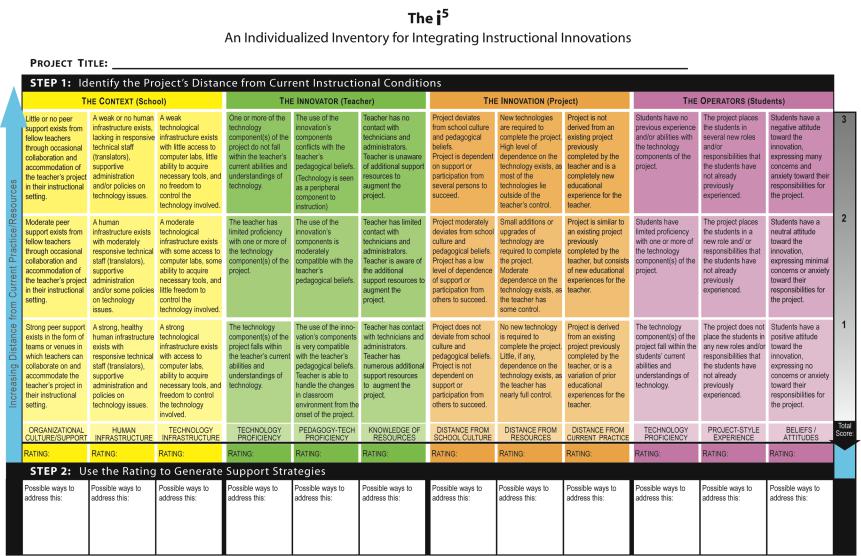
GamesSimsSocNets_EdArcade
.pdfand adult lives. We need to be conceptualizing and experimenting with new methods in education, so that we are better able to adapt to the dynamics of our changing world. Games, simulations, and social networking are already permeating the workplace as productivity and development tools—we may be doing our students a large disservice by not integrating these tools into their education. At the same time, we must acknowledge that there is a reason these tools have been adopted so pervasively in the workforce—these groups are identifying the advantages of these tools and are leveraging them to enhance their work. If they are able to see many of the advantages of these tools in their productivity, what might educators find in student performance?
Where are we headed with the use digital games, simulations, and social networking technologies in educational practice? While we cannot say for certain, we can say that the capacity for digital games, simulations and social networking technologies to facilitate and leverage deep learning is evident enough to warrant further exploration and the development of new best practices. But we don’t need to wait for the distant future to understand if and how we can implement these technologies. Students today are using these technologies now, and if you look around, it is highly likely that there is a Ross, a John, or even a tag-team like Hal and Kali right down the hall from you. And while, Ross, John, Hal, and Kali may not have all the answers, they are indeed finding strong results. Through every day explorations like these in the classroom, it is teachers who are building the steps towards the future.
References
Albanese, A. (2006). Google is not the net. Library Journal, 32-33.
Bearison, D., & Dorval, B. (2002). Constructive features of collaborative cognition. In, Collaborative Cognition: Children Negotiating Ways of Knowing. 117-121.
Brady, J. (2004). More than just fun and games? Applied Clinical Trials (November 2004). Retrieved July 16, 2007 at http://www.actmagazine.com/appliedclinicaltrials/article/articleDetail.jsp?id=131503
Brown, J. S., Collins, A., & Duguid, P. (1989). Situated cognition and the culture of learning. Educational Researcher, 18(1), 32-41.
Clark, A. (1997). Being There: Putting Brain, Body, and World Together Again. Cambridge, MA: MIT Press.
Dawley, H. (2006). Time-wise, Internet is now TV’s equal. Media Life (February 1, 2006). Accessed at http://www.medialifemagazine.com/cgi-bin/artman/exec/view.cgi?archive=170&num=2581 on August 7, 2007.
Facer, K. (2003 ). Computer games and learning. Futurelab.
Feller, B. (2006). “Scientists say video games can reshape education.” The Seattle Times; October 18, 2006.
Gee, J. (unpublished manuscript). Why are video games good for learning? Academic Co-Lab.
http://www.academiccolab.org/resources/documents/MacArthur.pdf
usi ng th e t e ch nol og y o f t oday , i n t h e clas sroo m t oday |
|
1 9 |
|
|
|
|
|
|
Green, H and Hannon, C, 2007, Their Space: Education for a digital generation, online version, accessed September 4 2007, http://www.demos.co.uk/files/Their%20space%20-%20web.pdf
Groff, J., & Haas, J. (2008). Groff, J., & Haas, J. (2008). Web 2.0: Today’s technology, tomorrow’s learning. Learning & Leading with Technology, September/October 2008.
Groff, J., & Mouza, C. (2008). A framework for addressing challenges to classroom technology use. Association for the Advancement of Computing in Education (AACE) Journal, 16(1), 21-46.
Jenkins, H., Purushotma, R., Clinton, K., Weigel, M., & Robison, A. (2006). Confronting the challenges of participatory culture: Media education for the 21st century. Chicago, IL: The MacArthur Foundation.
Klopfer, E. (2008). Augmented learning: Research and design of mobile educational games. Cambridge, MA: MIT Press.
Klopfer, E., Scheintaub, H., Huang, W., & Wendel, D. (2009). StarLogo TNG: Making agent based modeling accessible and appealing to novices. In Komosinski, M. (ed.) Artificial Life Models in Software, 2nd edition. Springer.
Klopfer, E., & Scheintaub, H. (2008a). ICLS Proceedings, Utrecht 2009 StarLogo TNG – Making content-centered game and simulation development accessible to students and teachers. {Conference paper}
Klopfer, E., & Scheintaub, H. (2008b). AERA StarLogo TNG – Making content-centered game and simulation development accessible to students and teachers. {Conference paper}
McFarlane, Sparrowhawk, & Heald, Y. (2002). Report on the Educational Use of Games. TEEM (Teachers Evaluating Educational Multimedia).
McMahon, M. (1997). Social constructivism and the World Wide Web - A paradigm for learning. Paper presented at the ASCILITE conference, December 1997. Perth, Australia.
Moersch, C. (1999). Levels of technology implementation: An inventory for measuring classroom technology use. Learning and Leading with Technology, 26(8), 59-63.
National School Board Association (2007). Creating & connecting: Research and guidelines on online social — and educational — networking. Alexandria, VA.
Prensky, M. (2001). Digital game-based learning. New York: McGraw Hill.
Shaffer, D. (2006). How computer games help children learn. New York, NY: Palgrave Macmillan.
Tinker, R. & Xie, Q. (2008). Applying Computational Science to Education: The Molecular Workbench Paradigm. Computing in Science and Engineering, 10(5), 24-27.
Trent, S., Artiles, A., & Englert, C. (1998). From deficit thinking to social constructivism: A review of theory, research, and practice in special education. Review of Research in Education, 23, 277-307.
2 0 |
|
usi ng th e t e ch nol og y o f t oday , i n t h e cla s sroo m t oday |
|
|
|
|
|
|

Appendix
us i ng th e t e ch no l o g y o f t o d a y , i n t h e cl a s s ro o m t o d a y |
1 |
